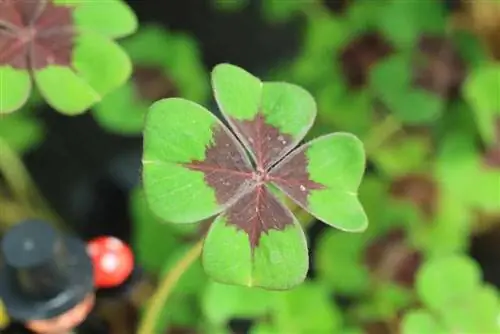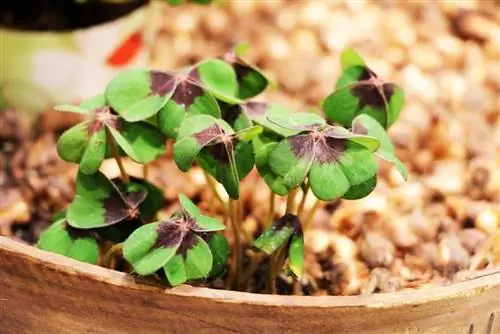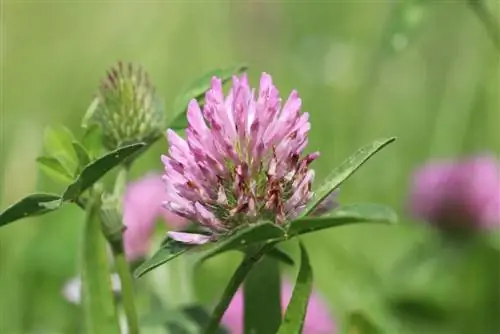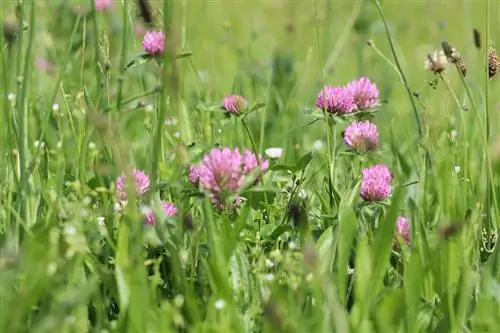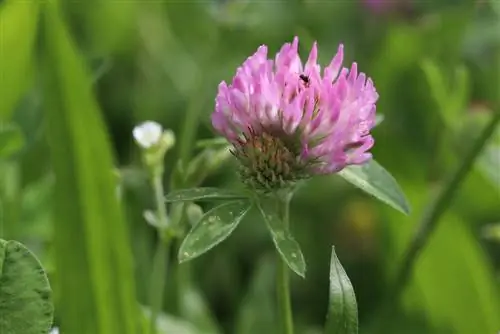- Author admin [email protected].
- Public 2023-12-17 03:39.
- Last modified 2025-01-24 12:45.
Schabzigerklee originally comes from the Caucasus and is mainly native to mountain meadows in Alpine regions. One reason to grow it in your own garden is definitely the aromatic taste of its leaves. It also looks pretty when its delicate blue flowers emerge from the green sea of leaves. The annual Trigonella caerulea reaches a height of 50 to 80 cm and is a delicious addition to any vegetable and flower bed. The bees fly to it and it supplies the soil with natural nitrogen.
Portrait
Schabzigerklee is botanically closely related to fenugreek, which is also valued as a spice because of its spicy aroma. Both belong to the subfamily Faboideae, which belongs to the species-rich legume family (Fabaceae or Leguminosae) and this belongs to the order Fabales. Like all plants from the legume family, they are a valuable and completely natural nitrogen enrichment for the soil. To do this, the roots and a certain type of soil bacteria (nodule bacteria, rhizobia) enter into a symbiosis. The result of a rather complex biochemical process is ultimately biologically available nitrogen in the garden soil. Some key facts about Schabzigerklee:
- annual
- generative propagation
- Flowering period June to August
- Flowers light blue-violet to whitish
- Location: sunny to partially shaded
- Soil: neutral to calcareous; dry
- Bee pasture, green manure, spice, herb
Cultivation: Sowing
Whether for ornamental use, as bee pasture, green manure or for culinary harvest, growing black clover is completely uncomplicated. The seeds are available from specialized mail order companies or well-stocked specialist retailers, both conventionally and in organic quality. The quantity of seeds required is calculated in grams per square meter, approx. 2 g per square meter.
Tip:
As a quick, easy germinator, sowing and cultivating Schabzigerklee is also well suited for the balcony or terrace. The delicate, blue flowers look pretty and can be easily picked at any time as a culinary, aromatic feast for the eyes to decorate your plates.
Cultivation: pre-culture
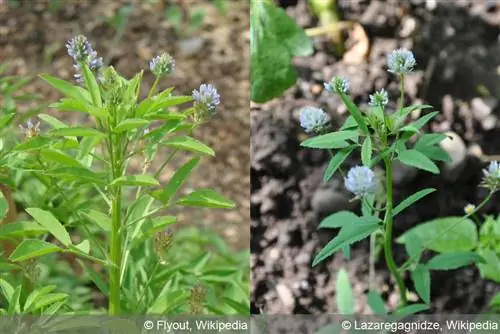
Pre-culture is not absolutely necessary, but can be very useful when growing in pots or for limited areas in the bed. From April onwards, the seeds are planted approx. 1 cm deep in small pots with potting soil. Depending on the temperature, they germinate quickly in 7-14 days at 15 to 20°C. Due to the short lifespan, seeds can still be grown until late May. When the seedlings are about 3 cm high, it's time to prick them out. They are then placed outdoors at the desired distances (10-30 cm) or in a larger pot or balcony box.
Sowing: outdoors
From the end of April to July you can also sow the seeds directly outdoors. To do this, plant the seeds about a good centimeter deep and cover them with soil. When sowing in rows, keep a distance of at least 30 cm between rows. At the beginning, keep the soil moist until the first leaves have formed. The requirements for the location are not very special. It shouldn't be too shady or too humid. Above all, do not sow the Schabzigerklee in the same place two years in a row. If you let the seeds run their course after flowering, this usually leads to overgrowth and less aroma in the leaves. Other plants from the legume family should not have been grown at this location in the last 3 years. The legumes are largely self-incompatible, as they say in gardening language. That's why when separating, it's important to ensure that the plants are sufficiently far apart from one another.
Care
As an annual herb, Trigonella caerulea is very undemanding to care for. If necessary, you can loosen the soil between the rows and remove weeds throughout the year. Since the clover forms taproots that reach moist layers a little deeper in the soil, it is not necessary to water in most German summers. If you cut it to a few centimeters above the ground shortly before flowering or when it is just beginning to bloom, you can harvest three times a year. Otherwise, leave it standing until the seed capsules have formed. Anyone who allows self-sowing for the following year must expect the bed to become overgrown. Which can certainly be desired. If you want a high-yielding harvest for your kitchen, you will definitely decide to plant again in rows somewhere else next year.
Harvest
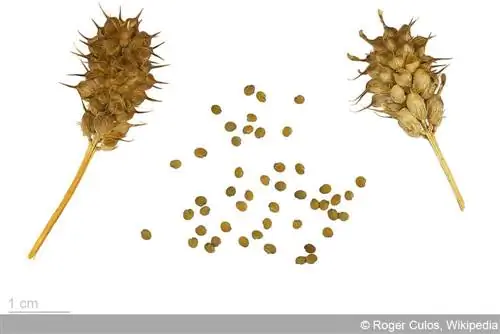
As already mentioned, the Schabzigerklee can be cut three times in the course of a year. This usually happens for the first time shortly before the flowering period in July. The leaves as well as the flowers and seeds are edible. The typical aroma only comes into its own when dried. The freshly harvested herb stems are tied together in bunches and hung upside down to dry in an airy, cool place, out of direct sunlight.
Application
Only when the bundles are really dry (crumb test) are all the pieces roughly cut up. In the next step, these are then processed into fine spice powder in a kitchen chopper or coffee grinder. The powder can then be stored in a jar with a screw cap for some time. It tastes great in bread dough, in savory pastries, in soups and stews. You can cook and bake it without sacrificing flavor. The dried seed, when ground, is also used as a spice. Mostly in meat marinades, sauces and also in bread and pastries. The fresh use of the herb is not as heat-resistant, not quite as intense, but no less tasty. For example as a bread topping, in wild salad or in cream cheese and quark. The best way to do this is to harvest the herb stems when they are beginning to bloom.
Conclusion
Growing your own Schabzigerklee is definitely worth a try. It is sown quickly and easily and offers a rich yield for the kitchen all year round. Its taste is very similar to fenugreek. The time required for care over the year is very small. It is particularly useful in natural gardens and farm vegetable gardens, both culinary and as a green manure. In short, Schabzigerklee is an enrichment for humans and bees.


